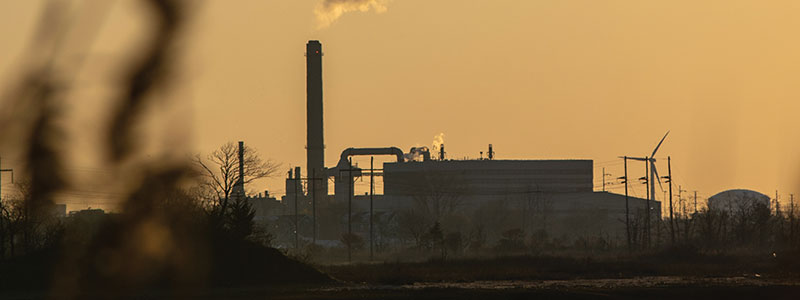Jackie Mercurio has lived in the shadows of a toxic waste incinerator her entire life. From the backyard of her childhood home in Saugus, Massachusetts, you can see the facility’s smokestack rising above the trees, spewing smog, pollution, and ash over the quiet residential neighborhood.
The incinerator weighs heavily on Jackie. As a kid, she recalls, “ash and soot showered down on homes every day – coating swimming pools, rooftops, and sidings in a blanket of toxicity. You could literally feel molecules of pollution around you.”
But no memories are as heart-wrenching as the many family and friends who have become ill since the facility opened 45 years ago. Almost every member of Jackie’s extended family, most of whom lived on her same street, has faced myriad cancer diagnoses – with no trace of family history. “If you knock on any door in this neighborhood, there’s at least one household member who has struggled with cancer,” she says.
What’s more, allergies are more severe, and asthma has become increasingly common. Jackie herself suffers from asthma and has a learning disability. While the area’s elevated cancer rates and other health issues cannot be linked definitively to the incinerator, Jackie believes they are all consequences of growing up breathing in the facility’s toxic fumes.
Sadly, Jackie’s neighborhood is not unique. The Saugus facility, owned by Wheelabrator, is one of 16 waste incinerators in New England. Located primarily in lower-income, working-class communities, all 16 facilities are limping along well past their 20- to 30-year lifespans.
“There’s this idea that if you put something in an incinerator, then you’ve somehow made it safe or inert,” says Kirstie Pecci, Director of CLF’s Zero Waste Project. But chemicals released from burning everyday items emerge out of incinerator smokestacks largely unchanged, including dioxins – one of the most dangerous contaminants known to humans. “If you live near an incinerator, you’re going be made sicker by the toxic chemicals you’re breathing in. Nowhere is that clearer than in Saugus,” she says.
For Jackie, championing the health of her hometown and neighboring communities is a family affair. When her mother, Pam, was just a baby, her aunt strapped her into a stroller and marched her down the street to protest the dirty town dump. When Wheelabrator later built its incinerator on the dump site, Pam, by then a devoted nurse, began to worry about how it could harm the health of the hundreds of thousands of people living close by.
Pam soon began speaking out against the facility and its health impacts, calling for it to shut down. After losing so many family members to cancer, she joined the town’s Board of Health, using her position to voice concerns to community members and local leaders – really, anyone who would listen.
While her campaign gained support locally, the ultimate decision maker, the Massachusetts Department of Environmental Protection (MassDEP), refused to take meaningful action.
Five years ago, Pam was diagnosed with brain cancer, and she struggled to maintain the vigor that had kept her going for so long. As Pam stepped back from activism, Jackie stepped forward. “One of the last times my mom spoke in public, she shared with MassDEP the issues surrounding Wheelabrator,” says Jackie. “That day, I felt like we did it together. I stood up with her as she spoke. It was the most powerful and impactful moment of advocacy I’ve witnessed by my mom.”
The testimony visibly moved MassDEP staff in the room, she says – but not enough to shut down the polluting facility that Jackie feels ultimately cost her mother her life.

Wheelabrator denies its facility causes any adverse health impacts and argues that people who don’t like living near the incinerator should move. But that was never an option for Jackie’s family. Her great-grandfather had settled in Saugus more than a hundred years ago. This was home. “We built this neighborhood,” says Jackie. “Why should we move if we were here first?”
“We can’t continue this cycle,” says Pecci. “No one should have to suffer such tragic consequences because we have a broken waste system. People think we need incinerators or landfills because otherwise, our garbage is going to pile up in the streets, but that’s just nonsense.” And, while CLF is fighting to shut down toxic landfills and incinerators across New England, the real solution, Pecci says, is to reduce our waste through better recycling, composting, and other zero-waste programs. “We can do this. These solutions are within our grasp.”
That’s why Jackie is carrying on her mom’s fight today – though it’s no longer just about honoring Pam’s memory. It’s also about making sure her one-year-old daughter can grow up in a clean environment. “Forty years ago, I was sitting in this house with my mom, and she was talking about this same issue. It just seems crazy to continue, but you have to.”
Giving up, however, is not an option. “I want my daughter to be able to play outside and not have to worry about ash. We’ve got to keep going.”

